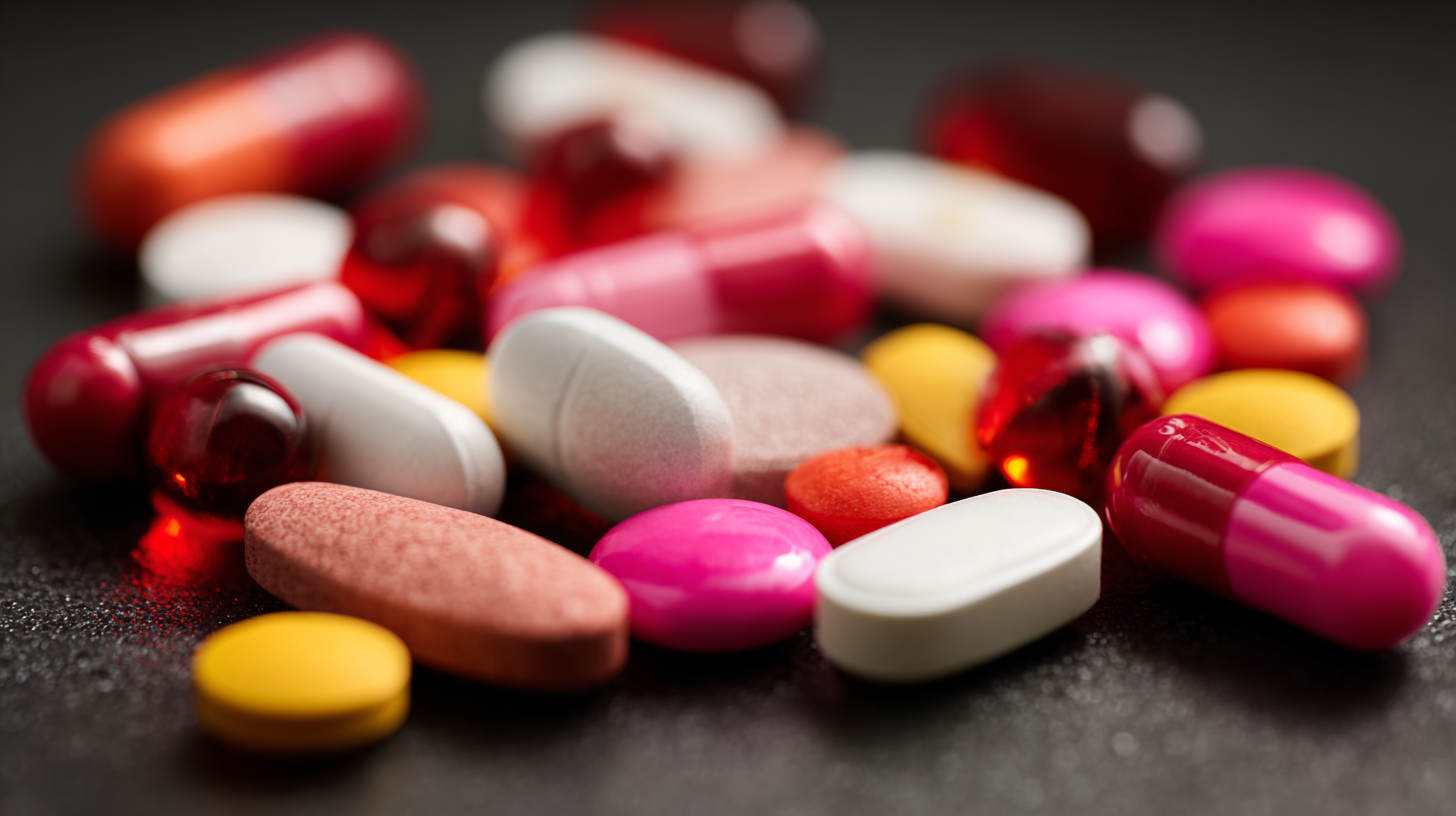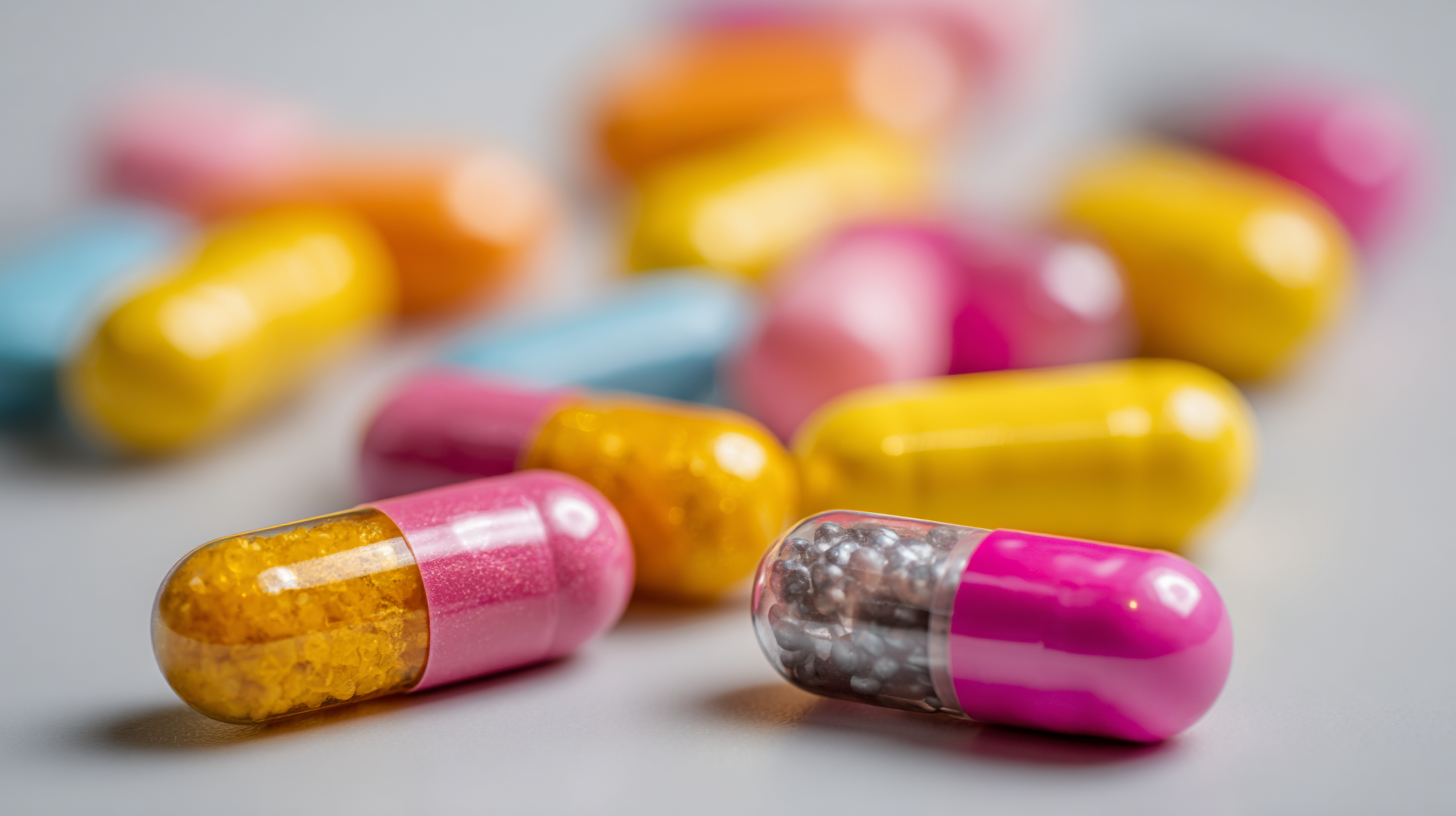In recent years, the pharmaceutical industry has experienced a significant shift towards the adoption of alternative pathways to improve the efficiency and effectiveness of drug development. API drugs, or Active Pharmaceutical Ingredients, remain central to this evolution, as they are crucial for the therapeutic efficacy of pharmaceutical products. According to a recent report from the Global API Market Analysis, the global API market is projected to reach USD 205.4 billion by 2024, growing at a CAGR of 6.4%. This growth highlights the pressing need for innovative solutions that can enhance drug formulation and delivery methods. As the quest for optimal API drug solutions intensifies, numerous contenders have emerged, each offering unique strategies to address the complex challenges faced by the industry. This blog will explore these alternative pathways, evaluating their potential impact and positioning in the competitive landscape of API drugs.

The rise of Chinese Active Pharmaceutical Ingredient (API) manufacturers in the global market is a testament to their increasing prominence and competitive edge in the pharmaceutical industry. According to the latest reports from IQVIA, around 40% of APIs consumed worldwide are sourced from China, showcasing its critical role in global supply chains. This surge can be attributed to several factors, including cost efficiency, advanced manufacturing capabilities, and expansive production capacities that outpace many western counterparts.
Chinese manufacturers are not only supplying essential APIs but are also focusing on quality and regulatory compliance, which has historically been a challenge. Recent data indicates that over 75% of Chinese API facilities have successfully met the stringent standards set by the U.S. Food and Drug Administration (FDA) and the European Medicines Agency (EMA). This shift towards high-quality production standards positions these manufacturers as formidable competitors in the global market, pushing to meet both domestic and international demands for pharmaceuticals while ensuring safety and efficacy. As global consumption of APIs continues to rise, China’s role is expected to grow even more significant, driving innovation and pushing the boundaries of production capabilities.
| Manufacturer Type | Global Market Share (%) | Number of API Products | Compliance Standards | Growth Rate (Annual %) |
|---|---|---|---|---|
| Multinational | 40 | 150 | FDA, EMA | 5 |
| Chinese API | 30 | 200 | NMPA, FDA | 12 |
| Domestic Producers | 20 | 100 | FDA | 8 |
| Generics | 10 | 75 | EMA | 3 |
China's pharmaceutical landscape is undergoing a remarkable transformation, fueled by key innovations aimed at enhancing Active Pharmaceutical Ingredient (API) drug solutions. With the country's robust investment in research and development, companies are increasingly focusing on biotechnological advancements and synthetic biology. These innovations not only improve the efficiency of API production but also ensure high-quality standards that meet international regulatory requirements.
Moreover, the rise of digital technologies is revolutionizing the way APIs are formulated and manufactured. Advanced data analytics, artificial intelligence, and machine learning are enabling manufacturers to streamline processes, reduce costs, and accelerate time-to-market. This digital shift is complemented by collaborative ventures between academic institutions and industry leaders, fostering an environment of creativity and shared expertise. As China continues to lead in API drug solutions, these transformative elements position it as a formidable player on the global stage, ready to tackle emerging health challenges with agility and innovation.
In the rapidly evolving pharmaceutical landscape, the standards governing Active Pharmaceutical Ingredient (API) production play a crucial role in ensuring drug quality and safety. A comparative analysis between China and global API production standards reveals significant differences that could influence the future of drug manufacturing. China, being one of the largest API producers, has made substantial strides in aligning its regulations with international best practices. However, discrepancies still exist, particularly in areas such as quality control, environmental compliance, and transparency in manufacturing processes.
Globally, regulatory bodies like the FDA and EMA enforce stringent guidelines to uphold the integrity of pharmaceuticals. In contrast, while Chinese regulations have improved, some argue that they still lag in rigorous enforcement and oversight. This divergence can lead to challenges in exporting APIs to Western markets, where higher standards and certifications are expected. The need for a unified approach to API production standards is becoming increasingly important as pharmaceutical companies seek alternative pathways to ensure their products meet both local and international expectations. Enhanced collaboration and knowledge-sharing between regions could pave the way for improved API quality and broader market access.
As the pharmaceutical landscape evolves, the development of Active Pharmaceutical Ingredients (APIs) continues to be a focal point, especially in China. Chinese leaders in the pharmaceutical industry are at the forefront of embracing innovative technologies and methodologies that expedite API development. One of the significant trends emerges from the integration of artificial intelligence in drug formulation processes, allowing for more efficient identification of potential compounds and reduction in development time. This shift not only enhances productivity but also leads to more targeted and effective drug delivery systems.
Moreover, sustainability has become a crucial aspect of API manufacturing. Chinese companies are increasingly adopting green chemistry principles to minimize environmental impact and reduce waste generation. Investing in sustainable practices not only aligns with global environmental goals but also appeals to a more conscientious consumer base. As these leaders explore alternative pathways, the collaboration between academia and industry is also growing, fostering an ecosystem that encourages innovation through shared expertise and resources. Such collaborative efforts are paving the way for new APIs that cater to unmet medical needs while adhering to stricter regulatory standards in the global market.

The challenges faced by Chinese API exporters in 2023 come amidst a complex tapestry of global trade dynamics, particularly influenced by the ongoing US-China trade tensions. As the active pharmaceutical ingredients (APIs) market is predicted to reach a size of approximately $237.47 billion this year, navigating these adversities becomes crucial for maintaining competitiveness. With the Trump-era tariffs still biting, the disruption of global pharma trade creates a paradox of risk and opportunity for Indian manufacturers. They stand at a strategic junction where, if they position themselves effectively, they can capture market share that might be vacated by Chinese suppliers.

Moreover, emerging trends such as nearshoring in Mexico present further context for Chinese exporters. The close proximity to the US market allows Mexico to strengthen its pharmaceutical supply chain, thereby presenting an alternative pathway to APIs that China historically dominated. Nevertheless, the rise of biotechnology in China, supported by its innovation capabilities and a surge in patent filings, indicates that it is not without resources or potential. As API exporters face these multifaceted challenges, their resilient adaptation will determine their ability to thrive in an increasingly competitive landscape.